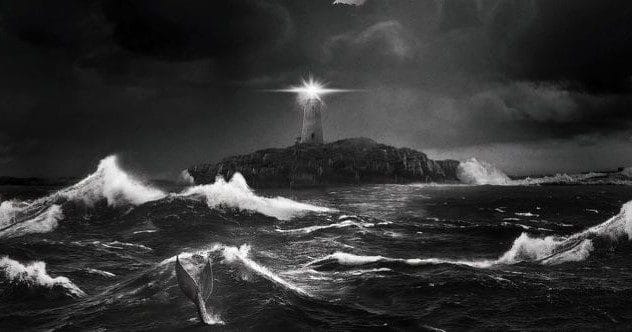Since its founding in 2012, A24 has become a beacon for unique, quirky, and award-winning independent films. Moving into production in 2016, this company has championed movies that flip the script on what we expect from cinema. They’re not afraid to challenge the status quo, often giving a cheeky wink to the repetitive Hollywood system. Many A24 films don’t just tell a good story; they actively change how we see movies and their possibilities. Get ready to explore ten A24 films that truly smashed the filmmaking mold and showcased their massive impact on the industry.
10. Eighth Grade (2019)
Bo Burnham’s Eighth Grade might sound like your average teen movie. It follows an awkward eighth-grader moving to high school, dealing with mean girls, pool parties, and social media. However, it’s anything but typical. This film cleverly sidesteps common teen movie tropes about makeovers or wild parties. Instead, it focuses on genuine, authentic relationships, offering a refreshingly real take on adolescence.
Burnham did his homework by watching the least-viewed YouTube vlogs of actual eighth-graders. He wove their personalities, slang, and expressions into the script. He even cast real eighth-graders, including the star Elsie Fisher. This dedication to realism paints a cringingly accurate picture of this pivotal time in life, without overdoing the bullies or hiding the flaws. When the MPAA gave it an R rating, A24 and Burnham arranged free screenings across the U.S., ensuring their target audience could see this unique film.
9. Hereditary (2018)
A24 has significantly reshaped modern horror, helping it evolve from cheap thrills to a respected art form. Ari Aster’s debut, Hereditary, stands as a monumental example and is often called one of the scariest popular horror films ever made. It masterfully avoids common jump scares and genre clichés.
Instead, Hereditary builds its terrifying tension around a family and the bizarre tragedies that strike them. It keeps you guessing about supernatural involvement until late in the story. A key element is its groundbreaking sound design. Composer Colin Stetson created a score that acts like another character – a looming, evil presence. Remarkably, his primary instrument for this dark, haunting soundscape, which covers two-thirds of the film, was his own voice.
8. The Lighthouse (2019)
Robert Eggers’s second feature with A24, The Lighthouse, showcases the company’s willingness to back truly unique visions. The film tells the story of two 19th-century lighthouse keepers, played by Robert Pattinson and Willem Dafoe, who slowly lose their grip on reality while isolated on a small New England island.
Everything about The Lighthouse is unconventional. It’s presented in black and white and uses a nearly square 1.19:1 Movietone aspect ratio, common in the 1920s. It was filmed on location in Cape Forchu, where the harsh wind, rain, and cold were all too real for the actors. Eggers pushed authenticity further by having Pattinson and Dafoe speak in often hard-to-understand 19th-century lighthouse keeper dialogue, work in tight spaces, and endure grimy conditions on camera.
7. Moonlight (2016)
A24’s very first produced film, Barry Jenkins’s Moonlight, is a poignant masterpiece. It chronicles the life of Chiron, a young, gay Black man, through his childhood, adolescence, and early adulthood, exploring the deep challenges tied to his sexuality and identity.
The film breaks storytelling norms by featuring three different actors to portray Chiron at different stages of his life. This structure highlights pivotal moments that shape his development. To create a distinct visual style fitting its time and setting, colorist Alex Bickel edited each chapter to mimic different film stocks like Fuji, Kodak, and Agfa. More than its narrative and visual innovation, Moonlight presents a thoughtful look at Black masculinity, vulnerability, and homosexuality. It was the first of its kind to gain such global recognition, winning both the Golden Globe and the Academy Award for Best Picture.
6. Midsommar (2019)
Ari Aster’s follow-up film, Midsommar, opens with a shocking murder-suicide, plunging protagonist Dani (Florence Pugh) into darkness. Seeking an escape, she joins her boyfriend and his friends on a trip to a remote Swedish village for a rare midsummer festival. What unfolds is horror in broad daylight.
Once in Sweden, the film plays out almost entirely in bright sunshine as the villagers’ sinister plan to gather nine human sacrifices becomes clear. On paper, Midsommar shouldn’t work. Daylight isn’t traditionally scary, and there’s no single villain; the villagers are collectively joyful and welcoming to their guests. Yet, by shattering fundamental horror rules, the film succeeds brilliantly. It even gambles by revealing the entire plot through a tapestry shown before the credits, a bold and unconventional move.
5. Uncut Gems (2019)
The Safdie brothers are known for their innovative filmmaking, and they hit cinematic gold with Uncut Gems. This New York-set crime thriller is innovative in two key ways: It casts Adam Sandler in a stunningly serious dramatic role, and it creates such breakneck tension that it’s physically stressful to watch.
Sandler plays Howard Ratner, a jeweler and gambling addict who pushes himself, his family, and the audience to the absolute limit of anxiety with one bad decision after another. The Safdies drew a nuanced performance from Sandler, unlike anything he’d done before. Their signature visual style, a kind of tactile claustrophobia, was achieved by directing cinematographer Darius Khondji to use garish lighting, sharp angles, overcrowded shots, and high contrast, all while moving relentlessly from one conflict to the next.
4. The Green Knight (2021)
In a move that’s daring even for A24, director David Lowery revitalized a 14th-century poem few know outside of English literature classes: Sir Gawain and the Green Knight. This Arthurian coming-of-age tale stars Dev Patel as King Arthur’s wayward nephew, who must embark on a quest to find the mysterious Green Knight.
Casting Patel, a mixed-race actor, in a role and era traditionally depicted as all-white was a striking choice. It added to a visual style that makes this ancient text feel relevant today. The film’s rich, mesmerizing color palette makes it a visual wonder, bringing the medieval setting to life vibrantly yet believably. What happened behind the scenes was equally groundbreaking: due to Lowery’s veganism, this became the first vegan medieval fantasy film. All leather and clothing seen on screen were made from non-animal materials.
3. Men (2022)
Alex Garland, known for his sci-fi debut Ex Machina, returned under the A24 banner with the folk horror film Men. Set in a remote English village, a grieving woman named Harper (Jesse Buckley) seeks solitude and reflection. Instead, she finds herself stalked by a town of unsettlingly similar and increasingly hostile men.
While the premise itself is chilling, the film’s greatest horrors come from its unique casting. Rory Kinnear stars opposite Buckley as, essentially, everyone else. He plays all the village’s male inhabitants, including the vicar, the police officer, the publican, and even a young boy. Often appearing as multiple versions of himself in the same scene, Kinnear skillfully shifted between these characters. He prepared for this by writing extensive biographies for each one, which then helped the hair and makeup team bring each distinct man to life.
2. The Tragedy of Macbeth (2021)
Most people are familiar with Shakespeare’s Macbeth, but few have seen it envisioned quite like Joel Coen’s The Tragedy of Macbeth. It was a bold move for a director known for contemporary comedy to tackle a 17th-century tragedy in black and white, using a 4:3 aspect ratio and Shakespeare’s original language. Perhaps even bolder was the color- and culturally-blind casting of Denzel Washington as the Scottish lord, speaking with an American accent.
What truly sets this film apart is its staging, lighting, and visuals. Cinematographer Bruno Delbonnel, famous for his rich color palettes, used his skills to make the black and white incredibly striking. Production designer Stefan Dechant played a huge role in realizing Coen’s vision, building soundstage sets filled with optical illusions. These illusions blurred the lines between up and down, day and night, interior and exterior. The result is a disorienting adaptation that immerses viewers in the horrors of Shakespeare’s classic tragedy.
1. Everything Everywhere All at Once (2022)
Daniel Kwan and Daniel Scheinert, known as “Daniels,” delivered a genre-defying breakthrough with Everything Everywhere All at Once. This film is the crown jewel of A24, both a massive critical success and their highest-grossing title. It beautifully embraces Asian-American culture and the struggles of second-generation immigrants, set in a surreal world of multiverses.
Everything Everywhere masterfully blends influences from across cinema. It winks at films like Crouching Tiger, Hidden Dragon (also starring Michelle Yeoh) with its martial arts sequences, and nods to the MCU with its dimension-hopping and sci-fi visuals—even referencing Ratatouille with a Raccaccoonie! It pushes the public’s fascination with multiverses and metafiction to its absolute limit, trampling every film boundary, including a fake-out ending with credits. Amazingly, this epic was made on a $25 million budget with a tiny five-person effects team using old-school tricks like wires and puppets, creating the feel of a much more expensive production.
A24 continues to champion films that aren’t just entertaining but also push the boundaries of what cinema can be. These ten movies are prime examples of their commitment to originality and daring storytelling, solidifying their place as a true game-changer in the film industry.
Which A24 movie do you think broke the mold the most? Leave your comment below!










